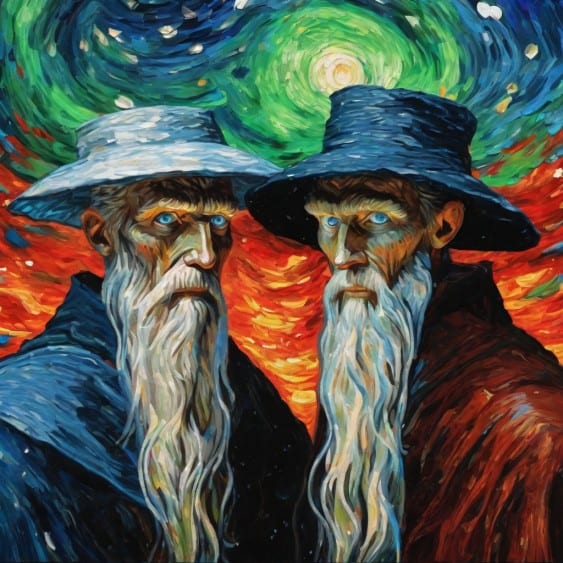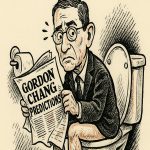Historic Market Crashes: Bloodbaths That Became Buying Bonanzas
“In the land of panic, the one who keeps his head becomes king.” — Tactical Investor
March 14, 2025
The Anatomy of Fear: Why Crashes Create Fortunes for the Few
Mass psychology dictates that humans fear loss more than they desire gain. This primal instinct, hardwired into our brains, causes most market participants to panic during crashes, selling at the worst possible moment. The Burro Theory from the Tactical Investor captures this perfectly:
“The masses are like a herd of burros. When the wind blows, they run in the same direction—straight off a cliff.”
Those who understand mass psychology and technical analysis know that market crashes aren’t disasters—they’re once-in-a-lifetime buying opportunities. The market’s most savage corrections have historically transferred wealth from the emotional to the strategic.
The Greatest Crashes—and the Smart Money That Seized Them
1929: The Great Depression (−89%)
Mass panic. Financial institutions collapsed. Suicides soared. Yet, John Templeton quietly bought 100 stocks trading at $1 or less during the height of the crash. When the dust settled, he emerged as one of the greatest investors of all time.
✅ Mass Psychology Insight: The herd was frozen in fear, believing the market would never recover. Templeton acted because he understood that fear creates undervaluation.
✅ Technical Confirmation: Templeton spotted signs of capitulation—volume spikes and extreme oversold conditions on the weekly chart.
1987: Black Monday (−22% in One Day)
The biggest single-day drop in history. Wall Street was drowning in blood. Yet, Warren Buffett calmly bought Coca-Cola stock while others dumped everything in sight.
✅ Mass Psychology Insight: Buffett ignored the media hysteria, recognizing that Coca-Cola’s fundamentals hadn’t changed—only investor sentiment had.
✅ Technical Confirmation: RSI readings hit extreme lows, signaling a massive oversold condition.
2008: The Global Financial Crisis (−57%)
Banks collapsed. Housing crumbled. The Fed intervened. Yet, those who bought Amazon, Apple, and Netflix at their lows saw 10x to 100x returns over the next decade.
✅ Mass Psychology Insight: The masses believed capitalism itself was dying. Smart money knew this was maximum pessimism—the point of reversal.
✅ Technical Confirmation: Double-bottom patterns and bullish divergences emerged as the market hit rock bottom.
The Secret Weapon: Technical Analysis + Mass Psychology
1. Fear-Driven Volume Spikes
When panic selling accelerates, volume explodes. This is the telltale sign that weak hands are capitulating and smart money is quietly accumulating.
- Example: In March 2020 (COVID Crash), S&P 500 volume hit record highs as retail investors dumped everything. Institutions bought heavily at the bottom.
2. Divergence Patterns
When price hits new lows, but momentum indicators (RSI, MACD) do not, this signals that selling pressure is weakening.
- Example: In the 2009 bottom, the S&P 500 formed a massive bullish divergence on the weekly RSI, marking the start of the longest bull run in history.
3. The Bandwagon Effect and Short Squeezes
When sentiment shifts from fear to optimism, the bandwagon effect kicks in. Early movers catch the reversal, while latecomers pile in, driving prices higher.
- Example: The 2018 Bitcoin crash saw early buyers scoop up BTC at $3,000. By the time the herd realized the bottom was in, Bitcoin had already hit $10,000.
Why Most Investors Freeze During Crashes (And How to Avoid It)
The Psychological Trap: Loss Aversion and the Pain Reflex
- The brain processes financial loss the same way it processes physical pain. This is why most investors panic sell during crashes and refuse to buy at the bottom.
- Contrarian investors rewire this response, training themselves to buy into fear and sell into euphoria.
Execution Blueprint: How to Turn the Next Crash into a Golden Opportunity
Step 1: Identify Extreme Fear (Mass Psychology Signal)
Use indicators like:
- The Fear & Greed Index (extreme fear = buying opportunity)
- The Volatility Index (VIX) (spikes above 40 = bottom signal)
Step 2: Use Technical Analysis to Confirm the Bottom
- Volume spikes + bullish divergence on RSI/MACD
- Breakout above key support levels
Step 3: Enter Gradually and Relentlessly
- Deploy 20% of your capital at the first sign of capitulation
- Add 30% when technical confirmation hits
- Hold 50% for the bandwagon rally when the herd finally wakes up
Case Study: The COVID Crash of 2020 (−34%)
✅ Mass Psychology Insight: The world thought the global economy would collapse. Smart money saw central banks flooding the system with liquidity.
✅ Technical Confirmation: The S&P 500 formed a double-bottom pattern with bullish divergence on the MACD.
✅ Outcome: Those who bought stocks like Tesla (up 1,200%) and Nvidia (up 1,500%) within months.
Final Thoughts: The Weak Fall, The Bold Rise
Market crashes aren’t random acts of chaos—they’re orchestrated events rooted in mass psychology. When fear grips the herd, value is systematically transferred from the emotional to the strategic. This is the brutal but undeniable truth that governs financial markets.
The Burro Theory exposes this cycle:
“The herd will always panic at the wrong time. The predator waits in the shadows and strikes when fear peaks.”
In every historic collapse, the masses drowned in fear while a select few feasted on opportunity. The 1929 crash, Black Monday, the Dot-Com bubble, and the 2008 meltdown—all followed the same script. The players changed, but human behavior did not.
History doesn’t repeat, but it rhymes because human nature is constant. The next crash will come. The question is: Will you be the emotional victim, fleeing with the herd? Or the cold-blooded predator who capitalizes on their fear?
Your edge isn’t in predicting when the market will break—it’s in having the mental discipline and technical skill to strike when it does. Those who master this principle don’t just survive crashes—they build generational wealth while others beg for mercy.
Fearless Wisdom













